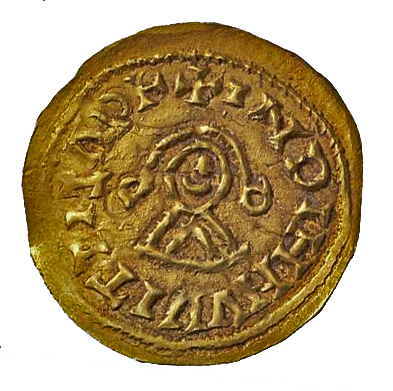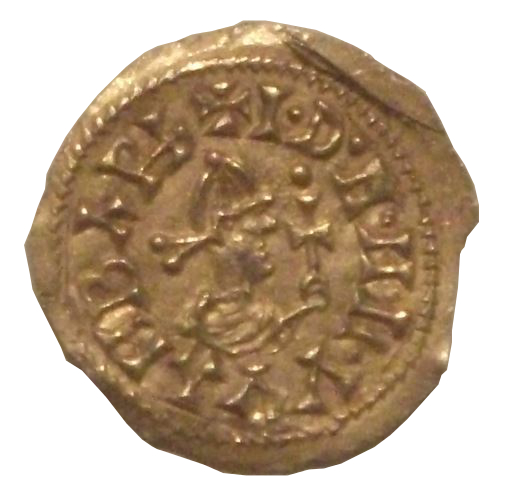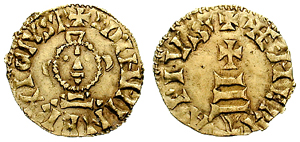|
Ergica
Egica, Ergica, or Egicca (''c''. 610 – 701/703), was the Visigoth King of Hispania and Septimania from 687 until his death. He was the son of Ariberga and the brother-in-law of Wamba. Accession He was married (''c''. 670) to Cixilo (also known as Cixilona, Cioxillo, or Cixila), the daughter of his royal predecessor Erwig and wife Liuvigoto. On his deathbed on 14 November 687, Erwig confirmed Egica as his heir and sent him with the royal court to Toledo to be crowned. He was anointed on 24 November. Upon Egica's marriage to Cixilo, Erwig had made him swear an oath to protect Erwig's children. Before his death Erwig required a second oath, swearing not to deny justice to the people. Shortly after taking the throne, Egica called the Fifteenth Council of Toledo on 11 May 688, at which he claimed the two oaths were contradictory (because to do justice to the people required "harming" Erwig's children) and asked the council of bishops to release him from one or the other. Egica, ... [...More Info...] [...Related Items...] OR: [Wikipedia] [Google] [Baidu] |
Wittiza
Wittiza (''Witiza'', ''Witica'', ''Witicha'', ''Vitiza'', or ''Witiges''; 687 – probably 710) was the Visigothic King of Hispania from 694 until his death, co-ruling with his father, Egica, until 702 or 703. Joint rule Early in his reign, Ergica made it clear that his intention was to secure his family in a position of power from which they could not be removed. Based on a charter dated to Ergica's seventh year (November 693 to November 694) which mentions Wittiza as co-king, it is probable that Wittiza was made co-ruler in 694, even though the ''Chronicle of 754'' places the event in 698.Collins, ''Visigothic'', 108. Numismatic analysis of coinage types also supports the thesis that Wittiza ruled from 694. The raising of Wittiza to the kingship coincided with the revolt of Suniefred and may have been either its cause or effect. On 15Thompson, 249. or 24 NovemberCollins, ''Visigothic'', 109. 700, Wittiza was anointed king; this forms the last entry in the ''Chronica Regum Visig ... [...More Info...] [...Related Items...] OR: [Wikipedia] [Google] [Baidu] |
Wamba (king)
Wamba (Medieval Latin: ''VVamba, Vamba, Wamba''; 643 – 687/688) was the king of the Visigoths from 672 to 680. During his reign, the Visigothic kingdom encompassed all of Hispania and part of southern Gaul known as Septimania. According to Herwig Wolfram, ''Wamba'' means "big paunch" in Gothic (like German: "Wampe", cognate to English "womb") and may have been a nickname. Both Julian of Toledo in his ''Historia Wambae'' (''History of Wamba'') and the decisions of the eleventh Council of Toledo, held under Wamba's auspices, only refer to the king as Wamba. History Military events After ascending the throne on 1 September 672, Wamba faced a revolt from Hilderic, governor of Nîmes, who had himself aspired to the kingship. Hilderic was supported by Gunhild, Bishop of Maguelonne. Wamba sent the dux (general) Paul to put down the rebels, but upon his arrival at Narbonne, he induced his officers to renounce their loyalty to Wamba and elect him king as Flavius Paulus. He was joined ... [...More Info...] [...Related Items...] OR: [Wikipedia] [Google] [Baidu] |
Erwig
Erwig ( la, Flavius Ervigius; after 642 – 687) was a king of the Visigoths in Hispania (680–687). Parentage According to the 9th-century '' Chronicle of Alfonso III'', Erwig was the son of Ardabast, who had journeyed from the Byzantine Empire to Hispania during the time of Chindasuinth, and married Chindasuinth's niece Goda. Ardabast (or Artavasdos), was probably an Armenian or Persian Christian exile in Constantinople or in Byzantine Africa. In Hispania he was made a count. Seventeenth-century Spanish genealogist Luis Bartolomé de Salazar y Castro gave Ardabast's father as Athanagild, the son of Saint Hermenegild and Ingund, and his mother as Flavia Juliana, a daughter of Peter Augustus and niece of the Emperor Maurice. This imperial connection is disputed by Christian Settipani, who says that the only source for Athanagild's marriage to Flavia Julia is José Pellicer, who he claims to be a forger. Succession After his predecessor Wamba had taken the monastic habit wh ... [...More Info...] [...Related Items...] OR: [Wikipedia] [Google] [Baidu] |
Reyes Visigodos Codex Vigilanus - Égica , a brain disease
{{Disambiguation, geo ...
Reyes (Spanish, 'kings') may refer to: *Reyes (name), including a list of people and fictional characters * Reyes, Bolivia, city capital of the José Ballivián Province in the Beni Department * Reyes rendering, a computer software architecture * Point Reyes, a prominent cape on the Pacific coast of northern California, U.S. * Reyes, a name for Epiphany (holiday) * Reyes Holdings, an American food manufacturer Other uses * See also * De los Reyes (other) * Reye syndrome Reye syndrome is a rapidly worsening brain disease. Symptoms of Reye syndrome may include vomiting, personality changes, confusion, seizures, and loss of consciousness. While liver toxicity typically occurs in the syndrome, jaundice usuall ... [...More Info...] [...Related Items...] OR: [Wikipedia] [Google] [Baidu] |
Defrocked
Defrocking, unfrocking, degradation, or laicization of clergy is the removal of their rights to exercise the functions of the ordained ministry. It may be grounded on criminal convictions, disciplinary problems, or disagreements over doctrine or dogma, but may also be done at their request for personal reasons, such as running for civil office, taking over a family business, declining health or old age, desire to marry against the rules for clergy in a particular church, or an unresolved dispute. The form of the procedure varies according to the Christian denomination concerned. The words "defrocking" or "unfrocking" refers to the ritual removal of the frock-like vestments of clergy and ministers. These rituals are generally no longer practiced and were sometimes separate from dismissals from ordained ministry, leading some to contend that modern use of "defrocking" is inaccurate. However, others maintain "defrocking" as a common synonym for laicization, one particularly popular in ... [...More Info...] [...Related Items...] OR: [Wikipedia] [Google] [Baidu] |
Musa Bin Nusayr
Musa ibn Nusayr ( ar, موسى بن نصير ''Mūsá bin Nuṣayr''; 640 – c. 716) served as a Umayyad governor and an Arab general under the Umayyad caliph Al-Walid I. He ruled over the Muslim provinces of North Africa (Ifriqiya), and directed the Islamic conquest of the Visigothic Kingdom in Hispania (Spain, Portugal, Andorra and part of France). Background Various suggestions have been made as to his ancestry. Some say his father belonged to the Lakhmid clan of semi-nomads who lived east of the Euphrates and were allies of the Sassanians, while others claim he belonged to the Banu Bakr confederation. One account stated that Musa's father was taken captive after the fall of the Mesopotamian city of Ayn al-Tamr (633). According to this account, he was an Arab Christian who was one of a number being held hostage there. However, al-Baladhuri, relating the same events, states he was an Arab of the Balī tribe, from Jabal al-Jalīl in Syria. As a slave, Musa's father entered th ... [...More Info...] [...Related Items...] OR: [Wikipedia] [Google] [Baidu] |
Seville
Seville (; es, Sevilla, ) is the capital and largest city of the Spanish autonomous community of Andalusia and the province of Seville. It is situated on the lower reaches of the River Guadalquivir, in the southwest of the Iberian Peninsula. Seville has a municipal population of about 685,000 , and a metropolitan population of about 1.5 million, making it the largest city in Andalusia, the fourth-largest city in Spain and the 26th most populous municipality in the European Union. Its old town, with an area of , contains three UNESCO World Heritage Sites: the Alcázar palace complex, the Cathedral and the General Archive of the Indies. The Seville harbour, located about from the Atlantic Ocean, is the only river port in Spain. The capital of Andalusia features hot temperatures in the summer, with daily maximums routinely above in July and August. Seville was founded as the Roman city of . Known as ''Ishbiliyah'' after the Islamic conquest in 711, Seville became ... [...More Info...] [...Related Items...] OR: [Wikipedia] [Google] [Baidu] |
Bishops In The Catholic Church
In the Catholic Church, a bishop is an ordained minister who holds the fullness of the sacrament of holy orders and is responsible for teaching doctrine, governing Catholics in his jurisdiction, sanctifying the world and representing the Church. Catholics trace the origins of the office of bishop to the apostles, who it is believed were endowed with a special charism and office by the Holy Spirit at Pentecost. Catholics believe this special charism and office has been transmitted through an unbroken succession of bishops by the laying on of hands in the sacrament of holy orders. Diocesan bishops—known as eparchs in the Eastern Catholic Churches—are assigned to govern local regions within the Catholic Church known as dioceses in the Latin Church and eparchies in the Eastern Churches. Bishops are collectively known as the College of Bishops and can hold such additional titles as archbishop, cardinal, patriarch, or pope. As of 2020, there were approximately 5,600 livin ... [...More Info...] [...Related Items...] OR: [Wikipedia] [Google] [Baidu] |
Archbishop
In Christian denominations, an archbishop is a bishop of higher rank or office. In most cases, such as the Catholic Church, there are many archbishops who either have jurisdiction over an ecclesiastical province in addition to their own archdiocese ( with some exceptions), or are otherwise granted a titular archbishopric. In others, such as the Lutheran Church of Sweden and the Church of England, the title is borne by the leader of the denomination. Etymology The word archbishop () comes via the Latin ''archiepiscopus.'' This in turn comes from the Greek , which has as components the etymons -, meaning 'chief', , 'over', and , 'seer'. Early history The earliest appearance of neither the title nor the role can be traced. The title of "metropolitan" was apparently well known by the 4th century, when there are references in the canons of the First Council of Nicæa of 325 and Council of Antioch of 341, though the term seems to be used generally for all higher ranks of bishop ... [...More Info...] [...Related Items...] OR: [Wikipedia] [Google] [Baidu] |
Oppas
Oppas (died after 712), also spelled Oppa, was a member of the Visigothic elite in the city of Toledo on the eve of the Muslim conquest of Hispania. He was a son of Egica and therefore a brother or half-brother of Wittiza. After the defeat of king Roderic at the Battle of Guadalete, according to the ''Chronicle of 754'', the Arabs under Tariq ibn Ziyad marched as far as Toledo, but Oppa, who was staying there, fled the city before they took it. Tariq executed many nobles still in the city on the pretense that they had assisted in Oppa's flight. Since the battle of Guadalete took place, according to the same chronicle, in 712 and the conquest of Toledo in 711 but after Roderic's defeat, either the battle of Guadalete must be pushed back or the conquest of Toledo pushed forward; the latter is preferred by Roger Collins.Collins, ''Visigothic Spain'', 134. Though Oppa fled Toledo, he may have been caught and executed soon after; but there is no indication that he did not survive. It ... [...More Info...] [...Related Items...] OR: [Wikipedia] [Google] [Baidu] |
Don (honorific)
Don (; ; pt, Dom, links=no ; all from Latin ', roughly 'Lord'), abbreviated as D., is an honorific prefix primarily used in Spain and Hispanic America, and with different connotations also in Italy, Portugal and its former colonies, and Croatia. ''Don'' is derived from the Latin ''dominus'': a master of a household, a title with background from the Roman Republic in classical antiquity. With the abbreviated form having emerged as such in the Middle Ages, traditionally it is reserved for Catholic clergy and nobles, in addition to certain educational authorities and persons of distinction. ''Dom'' is the variant used in Portuguese. The female equivalent is Doña (), Donna (), Doamnă (Romanian) and Dona () abbreviated D.ª, Da., or simply D. It is a common honorific reserved for women, especially mature women. In Portuguese "Dona" tends to be less restricted in use to women than "Dom" is to men. In Britain and Ireland, especially at Oxford, Cambridge, and Dublin, the word is us ... [...More Info...] [...Related Items...] OR: [Wikipedia] [Google] [Baidu] |
Trial By Ordeal
Trial by ordeal was an ancient judicial practice by which the guilt or innocence of the accused was determined by subjecting them to a painful, or at least an unpleasant, usually dangerous experience. In medieval Europe, like trial by combat, trial by ordeal, such as cruentation, was sometimes considered a "judgement of God" ( la, jūdicium Deī, ang, Godes dōm): a procedure based on the premise that God would help the innocent by performing a miracle on their behalf. The practice has much earlier roots, attested to as far back as the Code of Hammurabi and the Code of Ur-Nammu. In pre-modern society, the ordeal typically ranked along with the oath and witness accounts as the central means by which to reach a judicial verdict. Indeed, the term ''ordeal'', Old English ''ordǣl'', has the meaning of "judgment, verdict" (German ''Urteil'', Dutch ''oordeel''), from Proto-Germanic ''*uzdailiją'' "that which is dealt out". Priestly cooperation in trials by fire and water was forbidd ... [...More Info...] [...Related Items...] OR: [Wikipedia] [Google] [Baidu] |






